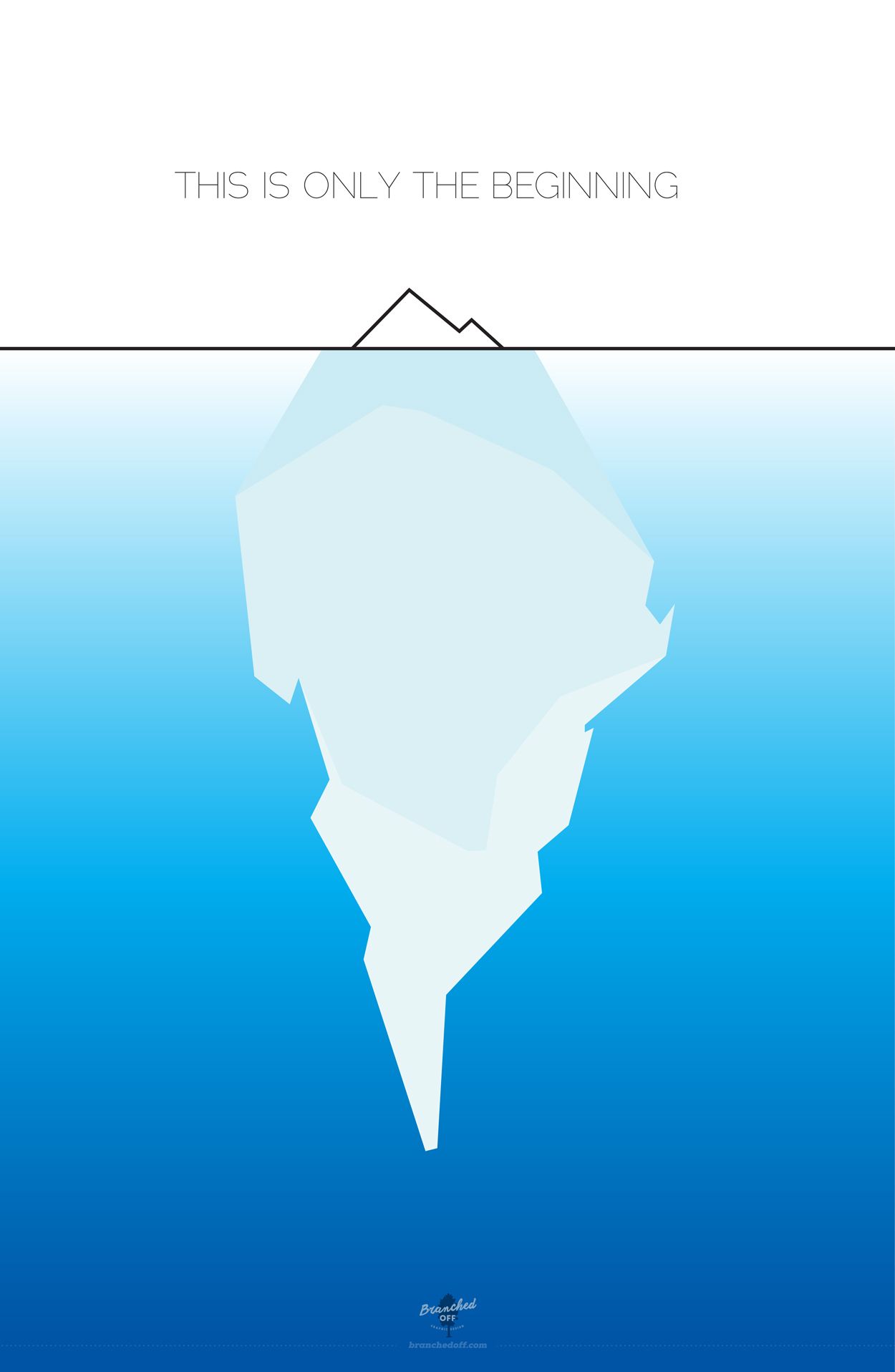

Finally, learners can present their iceberg diagrams to the class. Working in small groups, learners can complete an iceberg diagram for this event, recording details about what happened and then ideas about what they think caused the event. Ask learners to bring in a story from a newspaper or online source. Current Events: Utilize the iceberg diagrams method as a way to help learners explore current events.A well-designed diagram of an iceberg presents 10 part above and 90 submerged in water.

Lastly, the causes of the event are listed in the “roots” section. A beautifully designed iceberg diagram showcases the goals of the organization and its enablers clearly and concisely. Sometimes, instructors, have learners draw a line connecting individual or group to a choice they made related to this event. The different people involved in the event are listed in the branches of the tree. In this variation, learners record basic facts about the event in the trunk of the tree.
#Internet iceberg diagram how to
What have you learned concerning how to prevent events such as this one from occurring in the future?.What could have been done to stop this event from occurring?.What more would you need to know to understand better why this event occurred?.Which one or two of the causes listed at the bottom of your iceberg you think are most significant?.

What did you learn from finishing your iceberg?.Debrief: Prompts you may utilize to guide journal writing, or class discussion includes:.In the bottom part of the iceberg, they must answer the following question: “What variables may have influenced the decisions made by the people and groups who were in this event?” These variables may include events from the past or parts of human nature or behavior such as fear, conformity, or opportunism. Beneath the Surface: Ask learners to think about what causes this event.Questions they must answer include: What happened? What choices were made in this situation? By whom? Who was affected? When did it happen? Where did it happen? The Tip of the Iceberg: Ask learners to list everything they know about the facts of a selected event in the “tip” area of the iceberg.Their drawings must be big enough so that learners can take notes inside the iceberg, or you can distribute the iceberg template located in the handout section. Then ask learners to draw an iceberg on a piece of paper or in their journals, making sure that there is a tip, a water line, and a more substantial area below the surface. You want students to understand that what we see above the water is only the tip of the iceberg the broader foundation rests below the surface. Introduce the Iceberg Visual: Ask learners to list three things about icebergs, or you can show them a photo of an iceberg.Learners must already be familiar with this event. The event can be from literature, history, or recent news. Select an Event: Select an event that learners are exploring in class.This method can be used as a way for learners to organize their notes as they learn about a period in history, as a way to review material, or as an assessment tool. The visual image of an iceberg helps learners remember the importance of looking more in-depth than the surface to understand events in the past or present better. It’s often difficult for learners to see these causes because they rest beneath the surface. Subsequent updates may yet change what updates are available and what combinations work, among other things, but the below list details all 580 elements featured in the game’s major August, 2017 update.The iceberg diagrams teaching method helps learners gain awareness of the numerous underlying causes that give rise to an event. Little Alchemy has been updated since its release, and the total available as of April of 2018 is 580. Complete Element and Ingredient Combination List for Little Alchemy


 0 kommentar(er)
0 kommentar(er)
